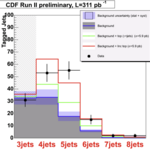As part of my self-celebrations for XX years of blogging activities, I am reposting here (very) old articles I wrote over the years on topics ranging from Physics to Chess to anything in between. The post I am recycling today is one that describes for laymen a reason why it is interesting to continue going after the top quark, many years (10, at the time the article was written) after the discovery of that particle. The piece appeared in July 10, 2005 in my column at the Quantum Diaries blog (https://qd.typepad.com/6/2005/07/ok_so_i_promise.html).
Ok, so I promised some insight on the new…
Physics
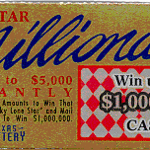
As part of my self-celebrations for having survived 20 years of blogging (the anniversary was a few days ago, see my previous post), I am re-posting a few representative, old articles I wrote in my column over the years. The selection will not be representative of the material I covered over all this time - that would be too tall an order. Rather, I will hand-pick a few pieces just to make a point or two about their content. In the first post of this series, which you find in its original format at this link, I describe a bright, failed idea I had 20 years ago, a creative way to do…
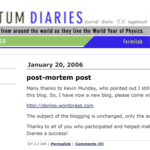
Twenty years ago today I got access for the first time to the interface that allowed me to publish blog posts for the Quantum Diaries web site, a science outreach endeavor that involved some 12 (then 15, then 25 or so IIRC) researchers around the world. A week before I had been contacted by the Fermilab outreach team, who were setting the thing up, and at that time I did not even know what a blog was!Since that day in December 2004, I have never really stopped blogging. Rather, I soon found out it was something that resonated with my outspokenness, with the kick I got from writing about my…
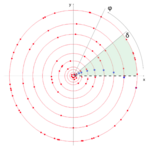
At the IV Workshop in Valencia a student from my group, Emanuele Coradin, presented the results of a novel algorithm for the identification of charged particles in a silicon tracker. The novelty is due to the use of neuromorphic computing, which works by encoding detector hits in the time of arrival of current impulses at neurons, and by letting neurons "learn" the true patterns of hits produced by charged particles from the noise due to random hits.
The group includes a number of students, and they all share the merit of working with this innovative computing concept at a particle physics…
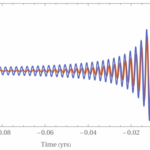
The recent video, "How LISA Will Listen to the Symphony of the Universe," provides a compelling insight into the future of gravitational wave astronomy—a field poised to fundamentally reshape our understanding of the cosmos. The Laser Interferometer Space Antenna (LISA), as the first space-based gravitational wave observatory, promises to extend the boundaries of scientific exploration, unveiling phenomena beyond the reach of terrestrial instruments like LIGO and Virgo.
The Promise of Space-Based Detection
LISA’s innovative design—three spacecraft arranged in an equilateral triangle,…
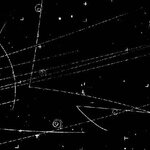
Last week I got to the part of my course in Subnuclear Physics for Statisticians (yes, there is such a course at the Department of Statistical Sciences in Padova, and I have been giving it since its inception 6 years ago!) where I discuss CP violation in the system of neutral K mesons. In one of the most surprising experiments of modern physics, the group of Cronin and Fitch proved in 1964 that the combination of the two symmetries operations called "charge conjugation" C and "parity inversion" P could in some cases modify the properties of physical systems.
I believe the experiment…
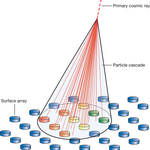
Nowadays we study the Universe using a number of probes and techniques. Over the course of the past 100 years we moved from barely using optical telescopes, that give us access to the flux of visible photons from galaxies, supernovae, and other objects of interest, to exploiting photons of any energy - gamma rays, x rays, ultraviolet and infrared radiation, microwaves; and then also using charged cosmic radiation (including protons and light nuclei, electrons and positrons), neutrinos, and lastly, gravitational waves.
By combining the data we collect from all these messengers, we have…

The 2024 Nobel Prize for Physics was awarded to John Hopfield and Geoffrey Hinton, who many have called “the godfather of AI”. The award seems apt for the time we are in. In the Royal Swedish Academy of Sciences’s press release, they explained their decision to award the prize to the pair, saying that they,
“used tools from physics to develop methods that are the foundation of today’s powerful machine learning. John Hopfield created an associative memory that can store and reconstruct images and other types of patterns in data. Geoffrey Hinton invented a method that can autonomously…
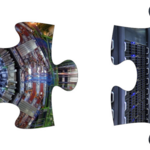
Earlier this year I mentioned here that I would be writing an article on how the utility function of experiments in fundamental science could be specified, as an enabling step toward the formalization of a co-design optimization problem. Now, as the deadline for submission approaches and the clock keeps ticking, I am returning to this topic and am mulling over the matter, so I thought it would be appropriate to dump here a few thoughts on the matter.Co-design
First of all, what is co-design, and why should all experimental scientists have that idea at the center of their field of view when…

The answers to the title questions are, No, Yes, and why not. What I have been doing instead of blogging lately has mostly been AI training as a freelancer for a company called Outlier.AI. I can't say what we work on or who we work for. Name a company or other organization known to have an interest in AI research and Outlier has likely provided services for them. It is interesting and engaging work that pays better than teaching actual human beings.
As one who works to train models that can be the next models or products you may hear about from various…
